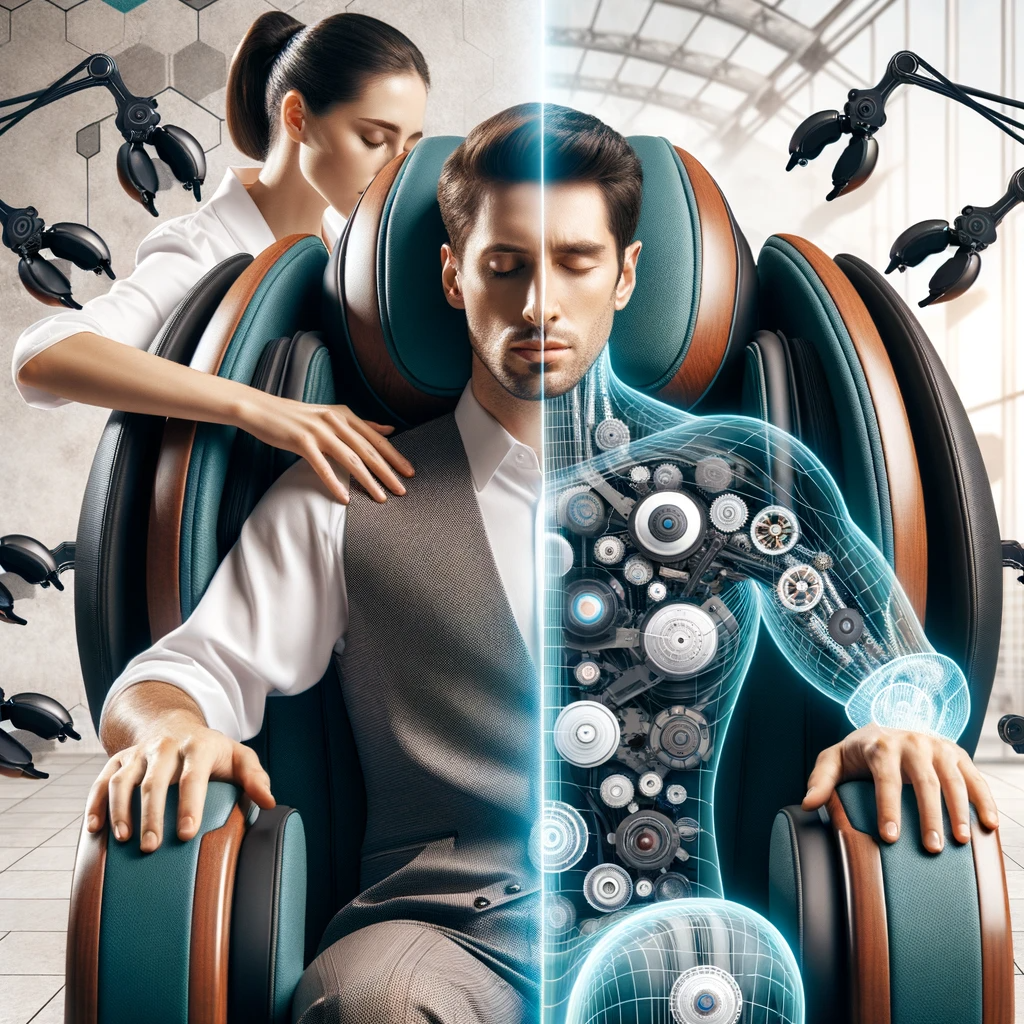Trade the spa for your living room! Discover how massage chairs work to mimic human hands. Can machines truly replace masseuses? Find out!

The allure of a soothing massage after a long day is undeniable. But with the advancement of technology, the big question is: How do massage chairs work to give us that professional touch right at home? Dive into the intricacies of these mechanical masseuses and learn how they aim to replace traditional human touch.
Understanding the Anatomy of a Massage Chair
At the heart of these chairs lie several components that mimic various massage techniques:
- Rollers: These move in set patterns, directed by the chair’s inner mechanisms. They mimic the hand movements of a masseuse, providing kneading, tapping, and rolling sensations.
- Airbags: These inflate and deflate, simulating the pressing technique of human hands and improving blood circulation.
- Vibratory Mechanisms: Embedded within the chair, they offer gentle vibrations, inducing relaxation.
- Heat Pads: Positioned strategically, these pads provide warmth, soothing sore muscles.
How the Tech Imitates Human Techniques
- Kneading: Rollers move in a circular pattern to simulate the kneading technique, which helps in releasing muscle tension.
- Tapping: The rollers push in and out rapidly, mimicking the tapping or percussion technique used by therapists to improve local circulation.
- Shiatsu: This technique involves applying pressure to specific points on the body. The chair uses rollers and airbags to exert pressure at targeted areas, emulating the hands of a Shiatsu therapist.
- Stretching: Some advanced chairs incorporate stretching functions, where the chair moves in a way to stretch the user’s body, mimicking stretches applied by therapists.
The AI and Sensors Collaboration
Modern massage chairs have evolved to include sensors that detect the user’s body shape, size, and the location of tension or knots. This data, coupled with AI algorithms, allows the chair to tailor a massage specific to the user’s needs, truly trying to emulate the personalized touch of a human therapist.
The Big Question: Can They Truly Replace Humans?
While massage chairs have come a long way in mimicking human touch, there are certain aspects they can’t fully replicate:
- Emotional Connection: A human therapist can provide emotional support and a healing touch, which machines can’t emulate.
- Adaptability: Although AI has made strides, human masseuses can instantly adapt techniques based on a person’s verbal and non-verbal feedback.
- Deep Expertise: Some therapeutic techniques require years of training and experience which a machine can’t completely encompass.
Conclusion: A Blend of Both Worlds
While the world of technology has offered us a mechanical masseuse in the form of massage chairs, they serve best as an addition to, rather than a replacement for, traditional human touch. Enjoy the convenience and instant access of a massage chair, but remember, nothing quite compares to the skilled hands of a professional.